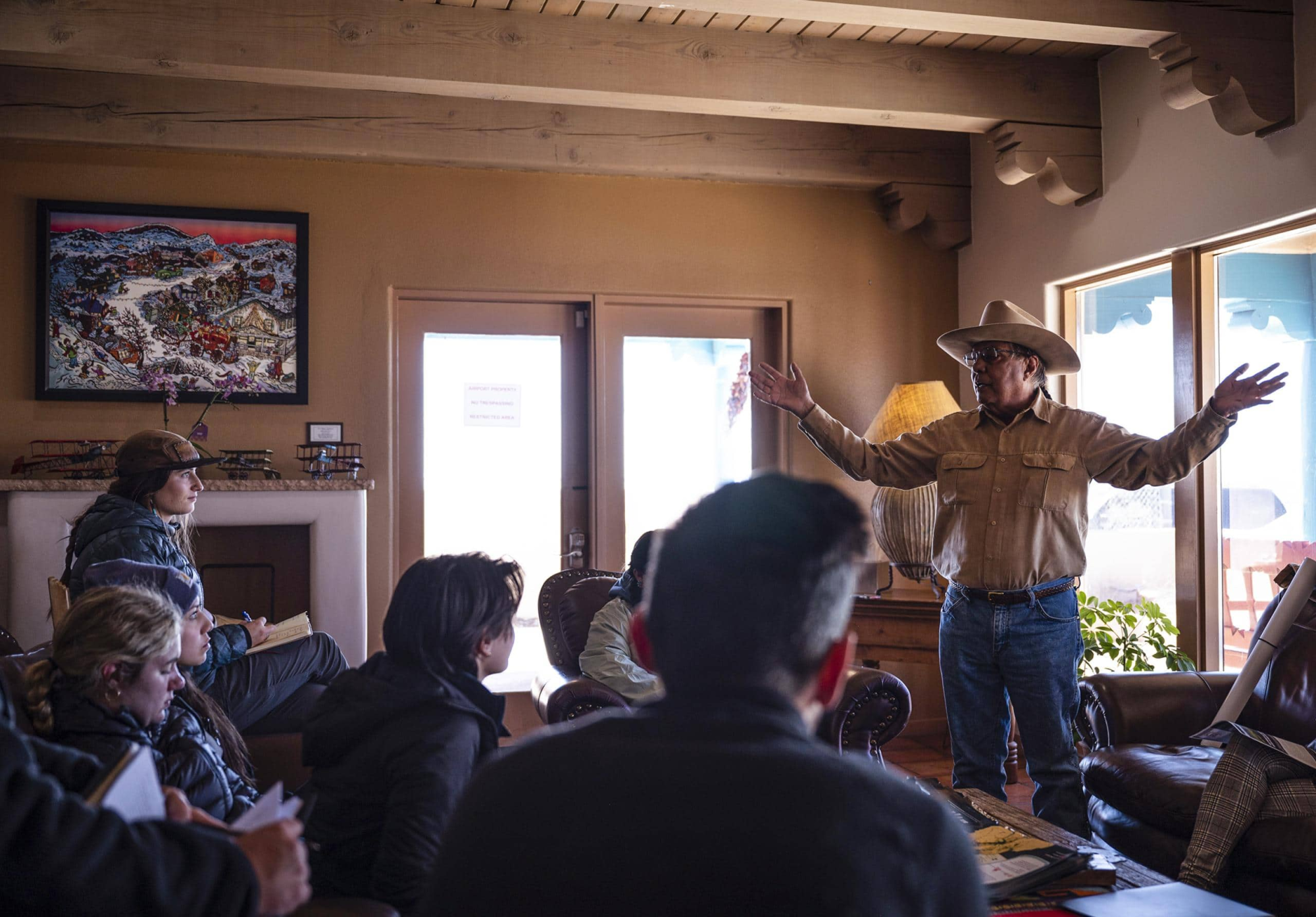
SANTA FE — Ralph Vigil called it surreal and devastating.
From thousands of feet in the air Wednesday, he peered out the window of a Cessna single-engine airplane to see what looked like dark, empty patches in the Sangre de Cristo Mountains — expanses of dead trees and open ground signifying the burn scars of the largest wildfire in New Mexico’s recorded history.
Where a green forest once stood, now blackened tree trunks filled the mountain side.
“It’s disheartening,” Vigil told the Journal after landing at the Santa Fe airport. “It’s sad to see all that gone — not only to see it gone, but to see how much is destroyed or dead.”
Vigil, a Pecos farmer and chairman of the New Mexico Acequia Commission, led the unusual tour Wednesday, providing college students and others an aerial view of the damage wrought by the Calf Canyon/Hermits Peak Fire.
It was part of a program offered by the nonprofit environmental advocacy group EcoFlight, giving college and graduate students a bird’s eye look at watersheds in the West.
The northern New Mexico flight came just before the anniversary of the start of the Calf Canyon/Hermits Peak Fire. A year ago Thursday, the U.S. Forest Service lost control of a prescribed burn near Gallinas Canyon west of Las Vegas, New Mexico — a blaze that eventually merged with a second fire and burned 534 square miles of national forest, wilderness and private land.
It destroyed more than 900 structures; forced tens of thousands of residents to flee; and burned a terrible scar across San Miguel, Mora and Taos counties.
A year later, residents say federal aid has been slow to reach their communities, even as they live with the aftermath of the fire and the flooding that followed. Some mountainsides and meadows — where many families earned a living through farming and ranching — are filled with dead trees and debris.
Many roads and culverts still await repairs.
Much of Wednesday’s presentation focused on damage to northern New Mexico’s acequias, a network of ditches and channels that carry water to family farms and small communities.
In a small building at the Santa Fe municipal airport, Vigil and other New Mexicans spoke to the students participating in the EcoFlight program as they prepared to fly over the Sangre de Cristo Mountains.
Vigil explained the cultural significance of acequias and their history. The small groups that run the ditches, he told the students, are the oldest form of democracy in the United States.
But last year’s fires and floods covered some acequias with soil and debris.
“Acequias hundreds of years old — now gone,” Vigil said.

Gilbert Quintana, a Mora Valley farmer, said some acequias are in such bad shape that it will almost require starting from scratch to rebuild them. Full restoration, he said, may take more than a generation.
“I think I will never see my homeland, my community restored again,” Quintana said.
But his children or grandchildren might, he said.
Quintana also offered some context for the fire’s origin as a prescribed burn. Over decades, Quintana said, the federal government has changed how Indigenous and Hispanic families manage the forest, not always for the better, in his view.
A federal review of the U.S. Forest Service prescribed burn that led to the Hermits Peak Fire found errors in its execution in planning.
The eight college and graduate students took notes and peppered Vigil, Quintana and Claire Catlett — a manager with Trout Unlimited, a nonprofit group — with questions about New Mexico’s water resources.
The students are spending the week flying, driving and hiking through Arizona, Colorado and New Mexico. It’s part of an EcoFlight project called Flight Across America, an experiential learning program for students interested in conservation, environmental science, journalism and/or aviation.
They flew as passengers in three Cessna 210 airplanes during the short flight over the mountains and burn scars.
For Vigil, who guided the tour by speaking over a headset, the aerial view was notable for what you couldn’t see — some of the forested mountainsides he grew up with.
“It feels empty,” he said afterward. “It looks empty.”